UFOs and strange figures that would appear to be space visitors are often found in cave paintings on cave walls around the planet, but these images also appear in classical pieces of art , especially those depicting divine events.
What would have led these artists to portray these enigmatic flying objects at a time when the pinnacle of technology, when it came to means of transportation, was limited to simple carriages?
Annales Laurissenses
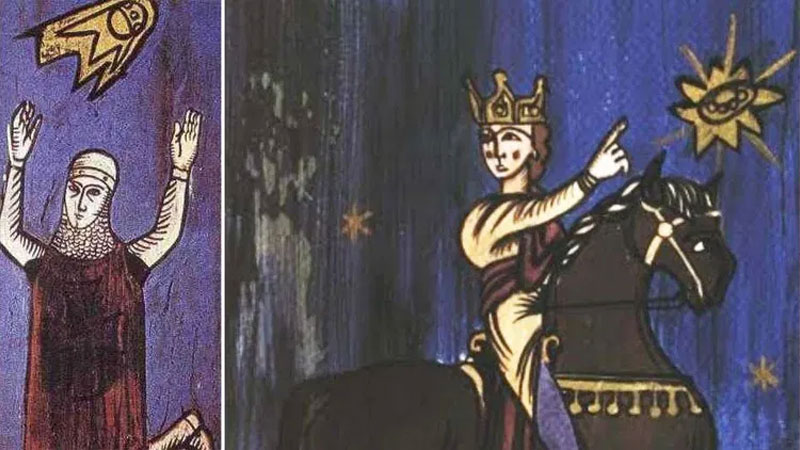
The above figures appear in the “Annales Laurissenses”, a 12th century French manuscript, which details the siege of Sigiburg Castle in 776, by the Saxons.
In these texts, it is said that when the Saxon invaders had surrounded the fortress, a fleet of disks appeared in the sky, flying over the church.
The Saxons understood the event as a kind of “heavenly protection” and decided to withdraw from the battle.
Annunciation with Saint Emigdio
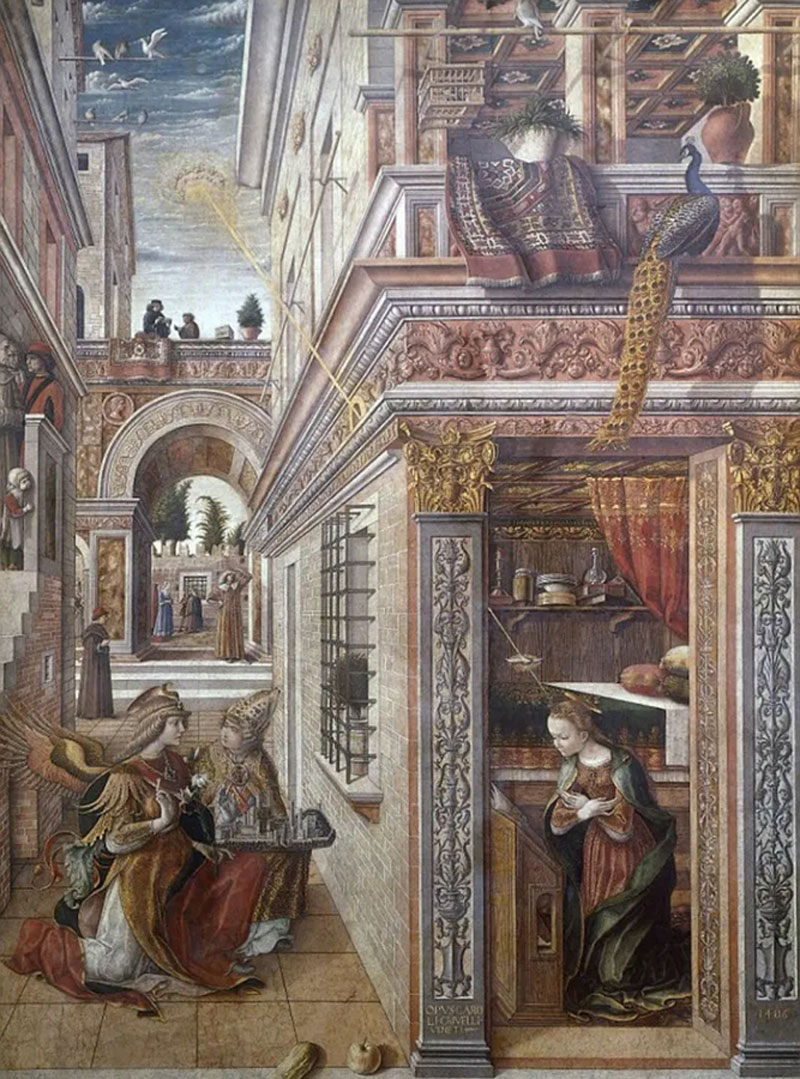
Painted by the Italian Carlo Crivelli in 1486, this work celebrates the proclamation of the Angel Gabriel to the Virgin Mary, who would give life to Jesus.
For experts in paintings , the object from which the Ray of Light or Holy Spirit emerges towards Mary’s head is nothing more than a group of angels rotating in a circle around the clouds, but for defenders of the UFO phenomenon, it represents a flying saucer and the contact of the Virgin Mary with extraterrestrials and, according to this interpretation, Jesus could be an extraterrestrial.
The Baptism of Christ
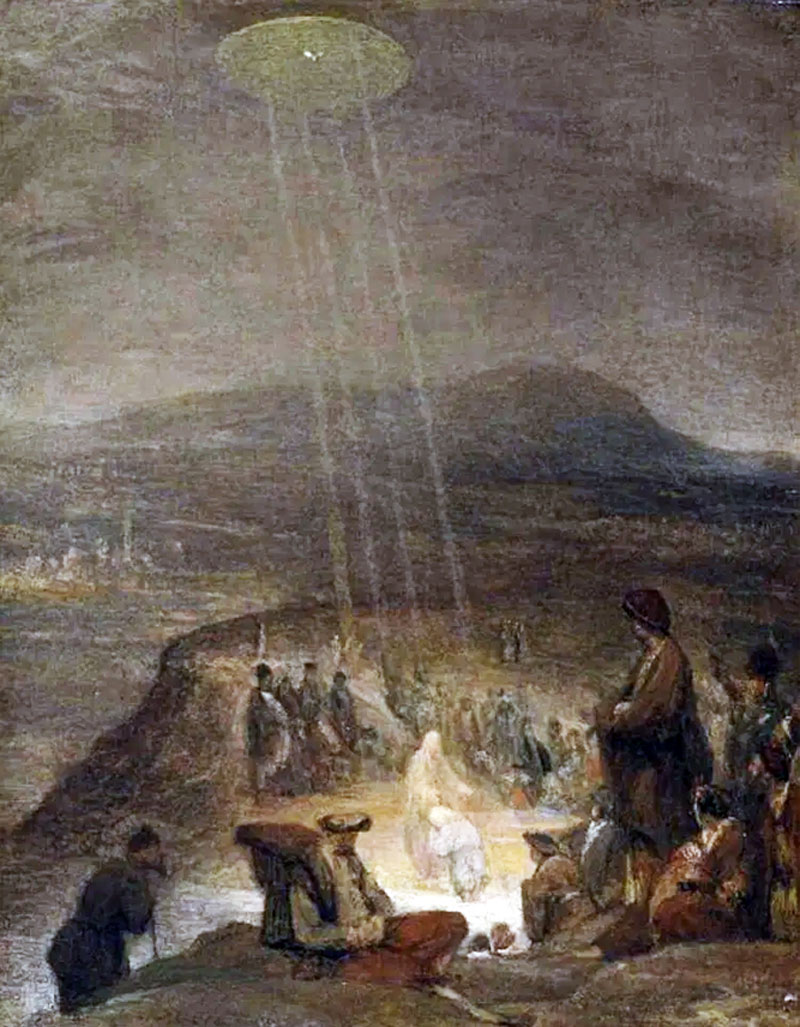
This work by the Dutch painter Aert De Gelder was made around 1710 and represents the baptism of Jesus.
In the New Testament, in Matthew 3:16, we read, “And Jesus, after he was baptized, immediately came up out of the water; and, behold, the heavens were opened to him, and he saw the Spirit of God descending like a dove, and coming upon him.
The painting shows what appear to be columns of light coming from the sky and illuminating the scene, presumably sent by God, but it is believed that the Dutch artist, a disciple of Rembrandt, has gained access to the secret archives of the Vatican Library and that the Gelder’s paintings , especially this one, were ways the painter found to convey this secret knowledge to the public.
The Crucifixion

This work was painted in 1350 and is located in the Visoki Decani Monastery in Kosovo, Serbia.
It shows the crucifixion of Jesus, but you can notice two strange flying objects next to Jesus, which carry human figures and would be, according to traditional experts, representations of the Sun (left) and the Moon (right), as a way of showing the cycle of life, day and night, in a humanized way.
But according to UFO theorists, these objects are believed to represent alien ships with their pilots dressed in space suits, and would be a useful way of revealing to the world humanity’s contact with extraterrestrials and perhaps even the extraterrestrial nature of Jesus himself.
The Glorification of the Eucharist
Commissioned by the Church of San Pietro in Montalcino, this painting was done by Italian Ventura Salimbeni in 1595 and is believed to suggest the possibility of extraterrestrial life or time travel.
The object of controversy is one that is located between Jesus and God, and that has a format very similar to that of the Russian satellite Sputnik, which began the space race in 1957, leading many to suggest that the artist could predict the future or having traveled in time.
Another theory suggests that the object could be some type of extraterrestrial Earth monitoring device.
Traditional historians say that the object is just the “Globe of Creation,” but, strangely, it appears to have a metallic finish and contains no evidence of land or continents, suggesting that it would be something artificial and not divine.
Book of Good Manners

Book of Good Manners.
Some of the Christian virtues such as chastity, caution, meekness, justice, moderation, obedience, diligence and humility are represented in the “Book of Good Manners”, written by the Frenchman Jacques Legrand in 1338.
The book is exhibited in the Condé Museum, located in the historic castle of Chantilly in France and clearly the mysterious sphere in the center of the scene surrounded by other strange flying objects is what sparks the never-explained controversy.
Madonna Col Bambino e San Giovannino
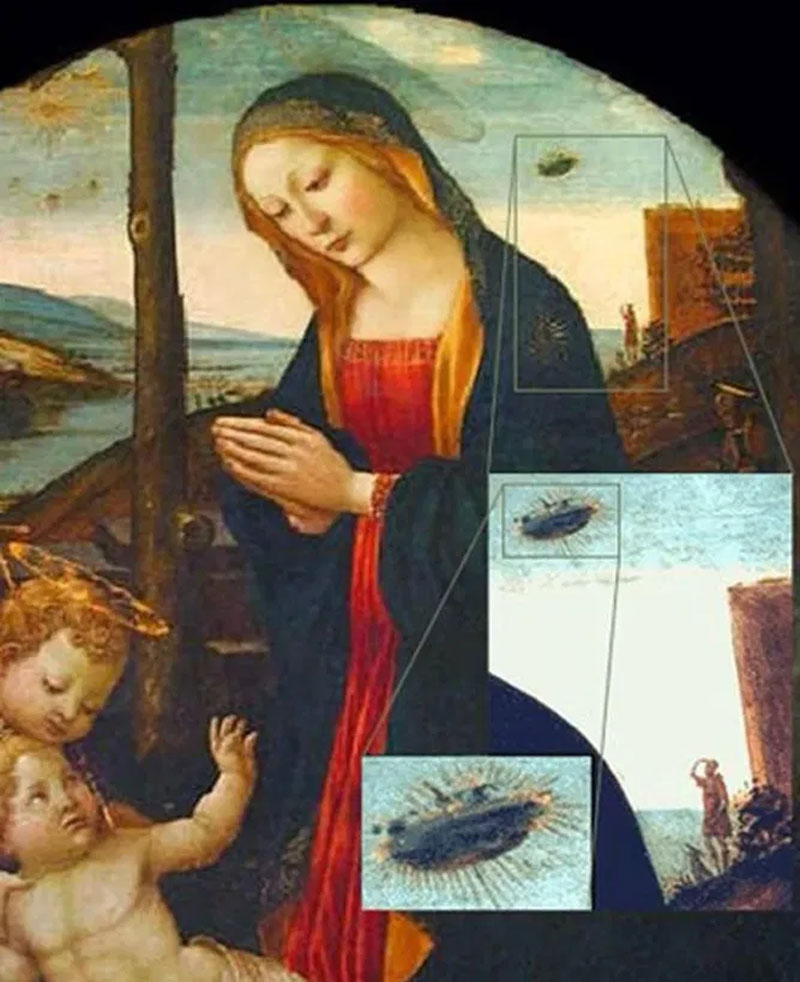
Madonna Col Bambino e San Giovannino.
There is a debate about who is the author of the work called “Madonna Col Bambino e San Giovannino”.
The 15th century painting is commonly attributed to Domenico Ghirlandaio, although some art historians consider Arcangelo di Jacopo del Sellaio and others Bastiano Mainardi as its creator.
The Renaissance painting , displayed in the Palazzo Vecchio in Florence, Italy, depicts Mary, mother of Jesus, looking at the two children, but in the background, a clear image of what appears to be a flying UFO can be seen, while a man blocks the sun with his hand and confronts the strange flying object in the sky, proving that said object might not be anything unusual at the time.
The Miracle of Snow
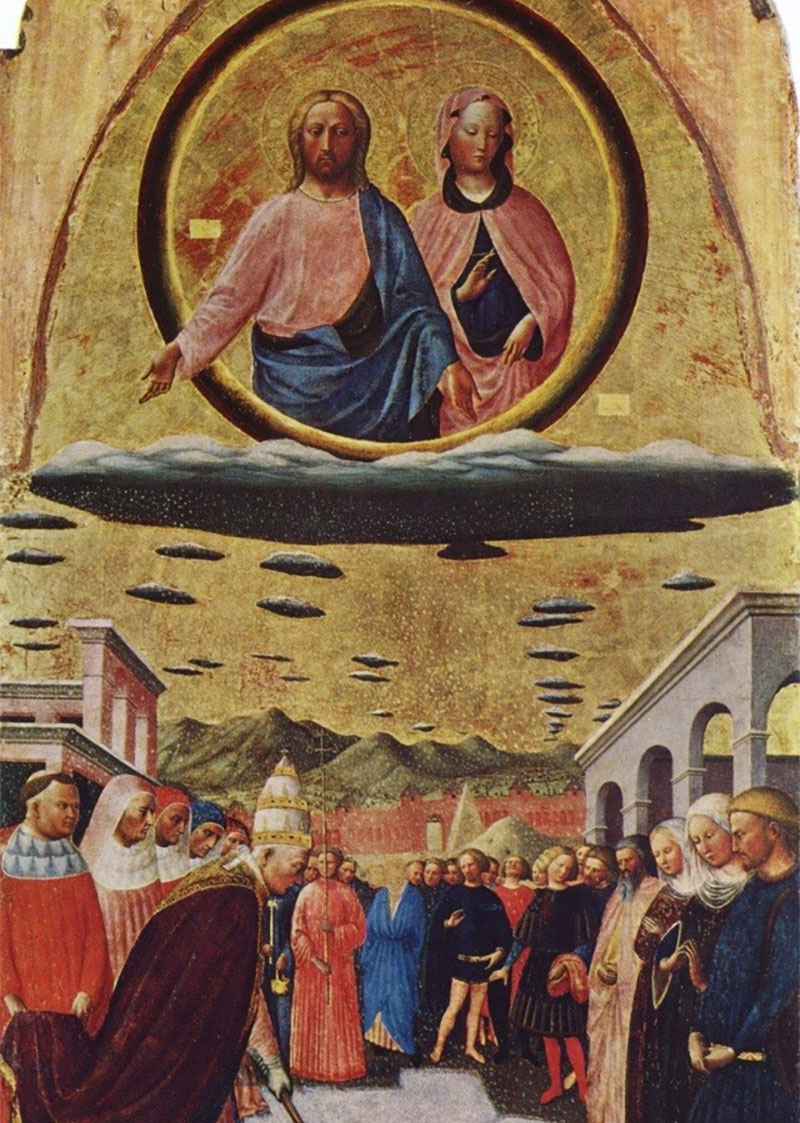
The Miracle of Snow.
Italian Renaissance painter Masolino da Panicale’s panel, made in the 15th century, depicts an event that became known as “The Miracle of Snow”, an unseasonable snowfall, which occurred in Rome during the 4th century, on a day of summer.
The image shows the population trying to understand what is happening, while Jesus and Mary observe everyone from what would be a large cloud, surrounded by dozens of other small clouds.
Ufologists believe they are not clouds, but rather a fleet of alien ships, and argue that the objects would be part of the original story and would be responsible for the unseasonable snow.
Sudden changes in temperature are associated with UFO sightings and there is a record of October 27, 1954, when numerous disk-shaped objects were seen flying over the city of Florence, Italy, in mid-afternoon and their passage was followed by the fall of snowflakes.
Prajnaparamita Sutra
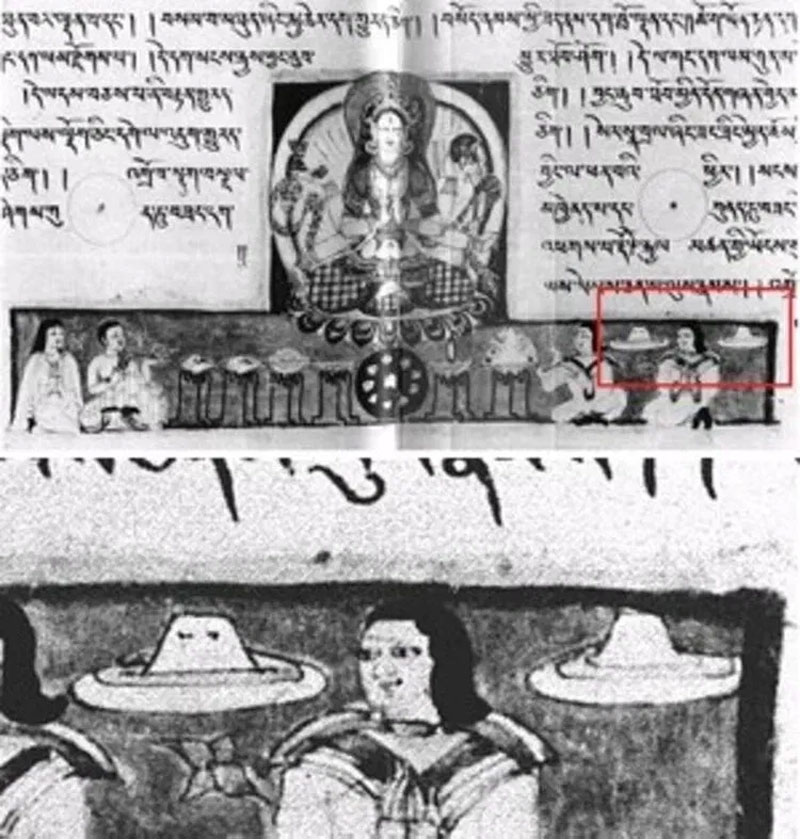
Prajnaparamita Sutra.
The image belongs to the text “Prajnaparamita Sutra” (The Sutras of the Perfection of Wisdom), translated in the 10th century from Sanskrit to Tibetan, and displayed in a museum in Japan.
Originally written in India around 100 BC, the text refers to the perfected way of seeing the nature of reality, and one of its most important features is “nutpada”, a Buddhist concept for the absence of origin.
The drawings contained in the book represent the Vimanas, a type of two-story circular or cylindrical nave with viewing points and a dome. The text states that the object flew with “the speed of the wind” and gave rise to a “melodious sound.”
Prodigiorum Liber
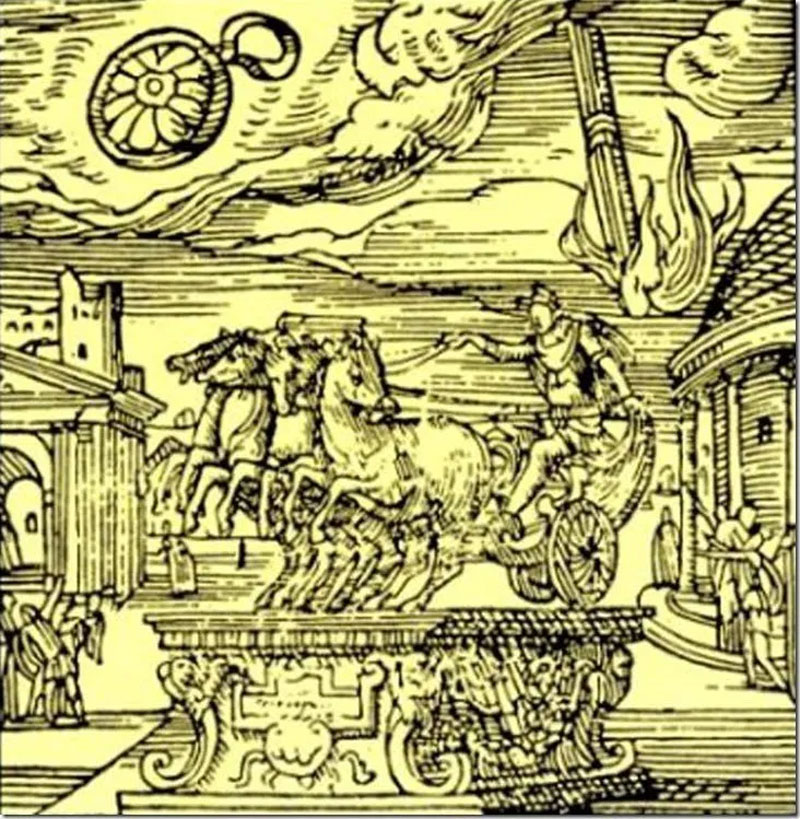
Prodigiorum Liber.
The Italian Julius Obsequens was a writer of Ancient Rome, who lived in the 4th century and made a compilation called “Prodigiorum Liber” (The Book of Wonders), based on the work of Titus Livy, a Roman historian, which contains several texts referring to extraordinary and supernatural events that occurred in the ancient Roman Empire between 249 BC and 12 BC
The illustration is from a UFO sighting and the text says: “Something like some kind of gun, shiny and golden, rose from the ground with a loud noise and fired into the sky.”
The Vatican Reliquary
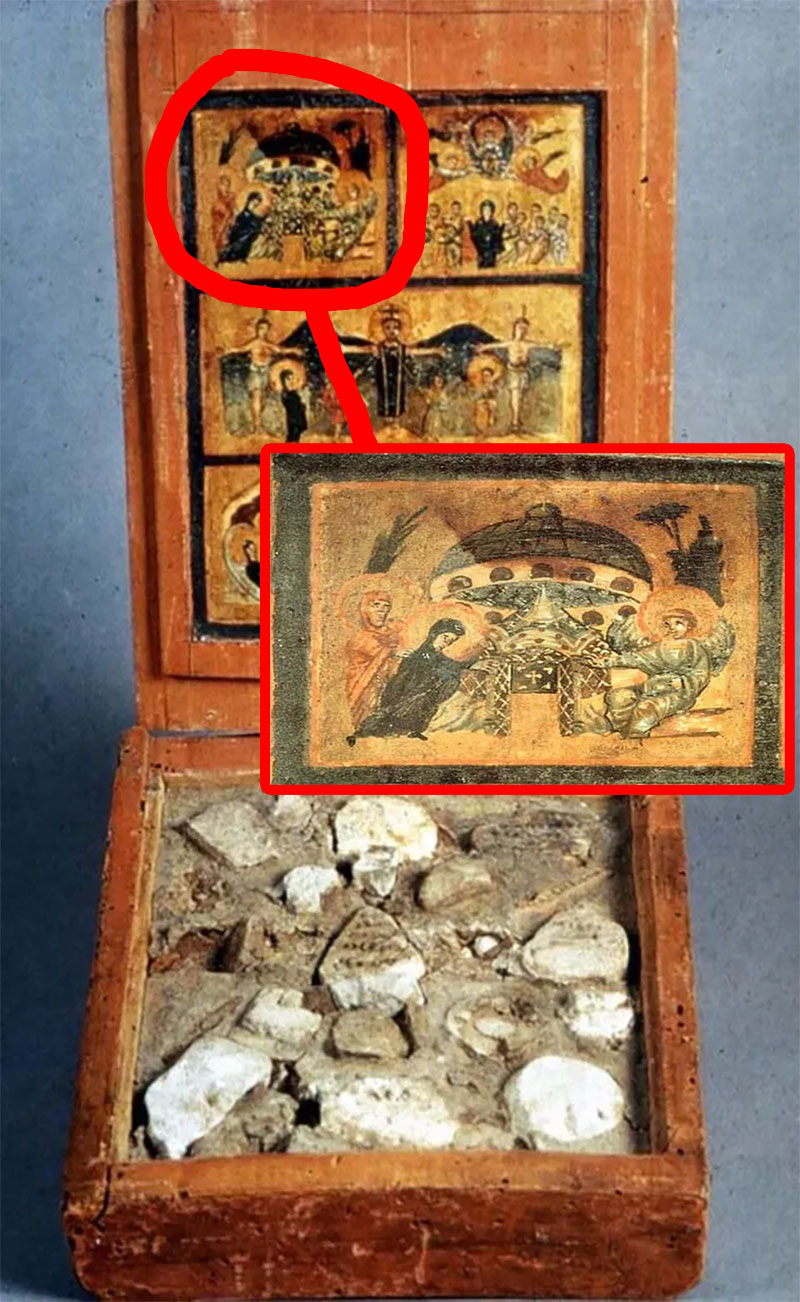
The Vatican Reliquary.
In the mysterious and secret Vatican Library, there is a reliquary containing stones from Palestine from the 6th and 7th centuries.
What is striking is that one of the several images that adorn the reliquary shows a representation of Mary in the tomb of Jesus and behind it, a strange object appears with a dome from which a beam of light emanates.
Gung Ji’s Land
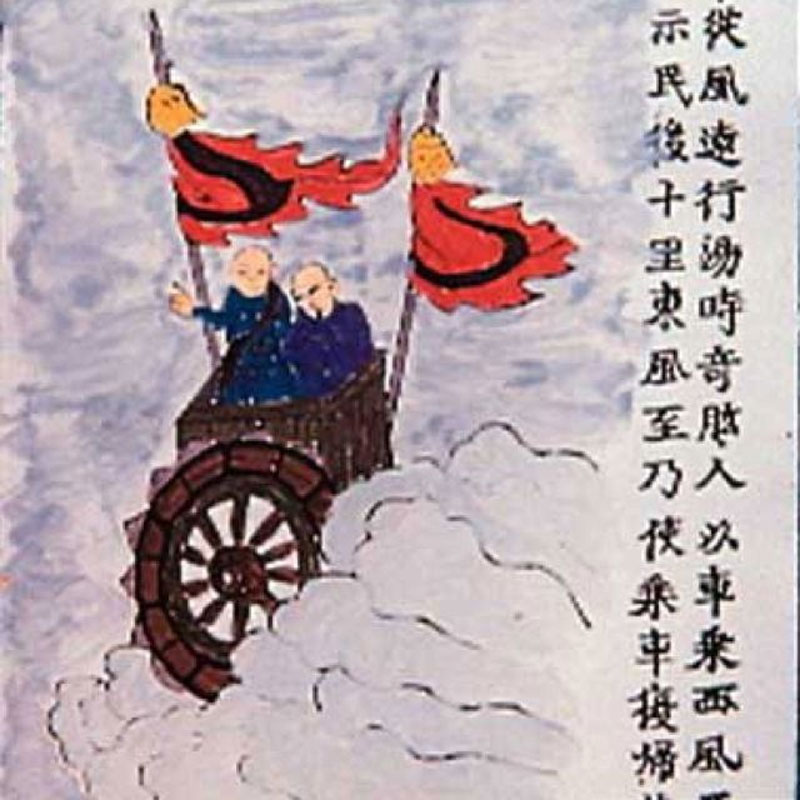
The Land of Gung Ji.
This is an ancient Chinese illustration from a book titled “The Land of Gung Ji: An Illustrated Study of Foreign Countries.”
It was written around 1400 and contains cryptic passages like this: “People could blow chariots traveling far with the right wind. In the days of Tarng (1700 BC), the people of Gung Ji flew in a car heading west in Yew Jo. Tarng had dismantled his car so that he would not show it to people. Then came an east wind in which he used to fly his car towards his own country (5,000 km) east of our lands .
The Triumph of Summer
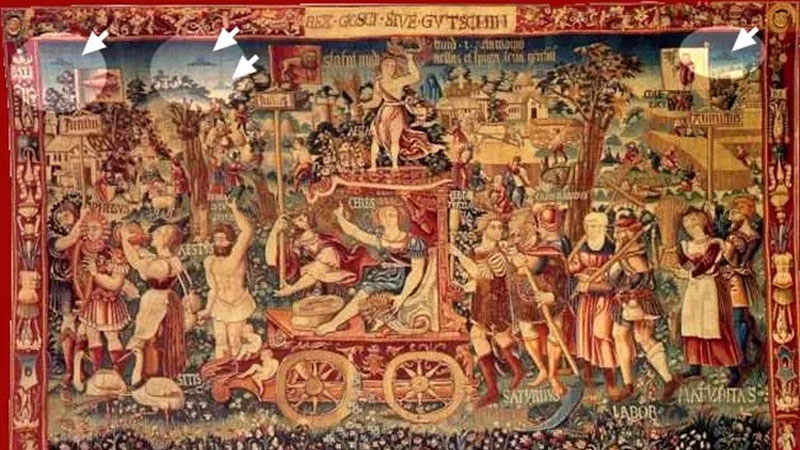
The Triumph of Summer.
This tapestry was made in 1538 in Bruges, Belgium, and is currently displayed in the Bavarian National Museum in Germany.
The piece appears to depict the rise of a ruler to power and shows several objects in the upper corners of the tapestry, shaped like saucers that appear to have domes, very similar to modern UFO reports.
Since there are no known religious symbols that are similar to this one, it is assumed that these objects do not symbolize something divine, and it is possible that the artist was recreating a phenomenon that he himself has observed.
Ume No Chiri
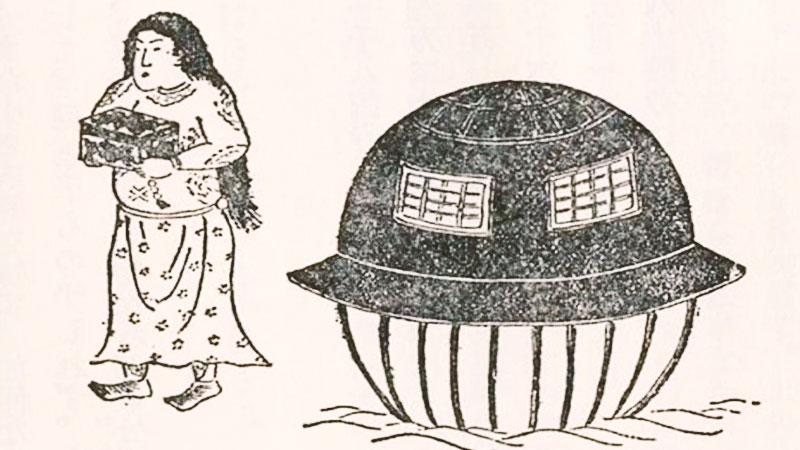
Ume No Chiri.
Written in 1844, “Ume No Chiri” is one of three Japanese texts reporting the landing of a mysterious object, which was found drifting off the coast of Hitachi Province in eastern Japan in 1803. The others two texts are the “Shosetsu” of 1825 and the “Hyoryu Kishu” of 1835.
The illustration represents the characteristics of the object that Japanese sailors found floating in the ocean.
From inside the “hollow boat,” as it was called, a woman, who spoke no Japanese, emerged, then returned to her boat and disappeared into the sea, never to be seen again.
For Japanese folklorists, “Ume No Chiri” is just one of several legends about supernatural beings that permeate Japanese culture, but for ufologists it is evidence of extraterrestrial contact.
Life of the Virgin
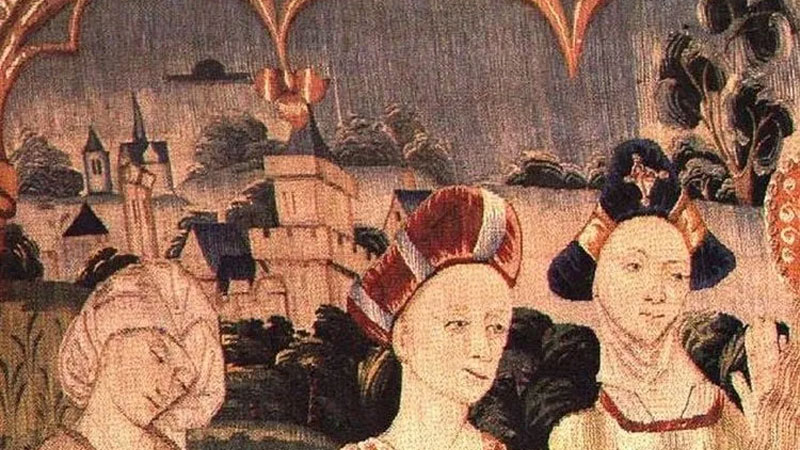
Life of the Virgin.
In the Basilica of Beaune Notre Dame in Burgundy, France, built in the 12th century, there is an incredible tapestry, dating back to the 15th century, in which you can enjoy various events in the life of the Virgin Mary.
The detail is in one of the images, on the left side of the upper corner, in which you can see a strange object, which resembles a UFO, flying over the city, just above the figure of three women of the time.



